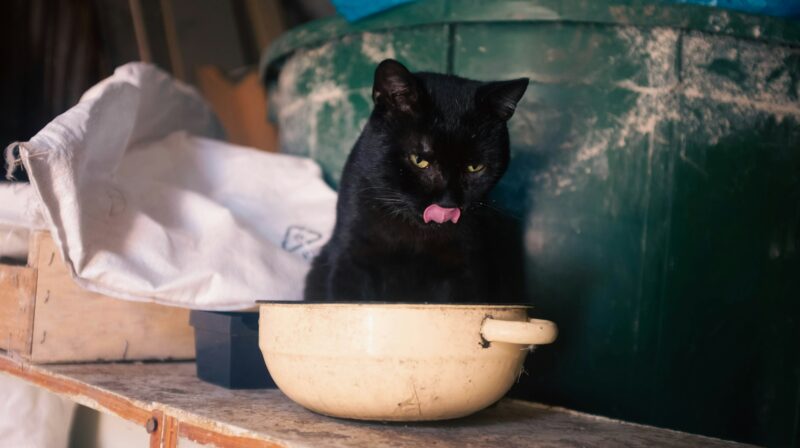As loving cat owners, ensuring the well-being of our feline companions is a top priority. One of the most powerful tools in maintaining your cat’s health is proper nutrition. In this comprehensive guide, we will explore how a well-balanced diet can contribute to preventing and managing common health issues in cats. Additionally, we’ll delve into specific dietary considerations for cats dealing with conditions such as diabetes, kidney disease, and allergies, providing insights into optimal nutritional solutions for every feline friend.
Section 1: The Role of Nutrition in Cat Health
1.1. Immune System Support:
- Cats require a variety of vitamins and minerals, such as vitamin C, vitamin E, and zinc, to support their immune system.
- Antioxidants, found in fruits and vegetables, play a crucial role in neutralizing free radicals and supporting overall immune function.
1.2. Healthy Weight Management:
- Obesity is a significant concern in cats and can lead to various health issues, including diabetes and joint problems.
- High-protein, low-carbohydrate diets are effective for weight management, as protein helps maintain lean muscle mass.
1.3. Digestive Health:
- Probiotics, found in some cat foods, promote a healthy balance of gut bacteria and aid in digestion.
- Fiber is essential for maintaining regular bowel movements and preventing constipation.
1.4. Joint and Bone Health:
- Omega-3 fatty acids, commonly found in fish oil, have anti-inflammatory properties and support joint health.
- Adequate calcium and phosphorus ratios are crucial for bone development, especially in kittens.
1.5. Coat and Skin Care:
- Omega-6 fatty acids, like linoleic acid, contribute to the health of the skin and the glossy appearance of the coat.
- Hydration is vital for preventing dry skin, so wet cat food or additional water sources are beneficial.
Section 2: Preventing Common Cat Health Issues Through Nutrition

2.1. Dental Health:
- Dental-specific cat foods often have kibble shapes that encourage chewing, aiding in plaque and tartar reduction.
- Some dental diets also include ingredients that help prevent gingivitis and promote overall oral health.
2.2. Hairball Management:
- Diets with added fiber, such as beet pulp or cellulose, can help move ingested hair through the digestive tract.
- Regular grooming and providing hairball control treats are additional preventive measures.
2.3. Urinary Tract Health:
- Wet cat food contributes to overall hydration, supporting urinary tract health by diluting urine and reducing the risk of crystals.
- Specialized urinary health diets may have controlled mineral levels to prevent urinary issues.
2.4. Allergy Prevention:
- Novel protein sources, like venison or duck, can be incorporated into hypoallergenic diets to minimize the risk of allergic reactions.
- Limited-ingredient diets help identify specific allergens causing adverse reactions.
2.5. Weight Management:
- Portion control is crucial for weight management; measure portions according to feeding guidelines.
- High-protein, low-fat diets help cats feel satisfied while promoting weight loss.
Section 3: Dietary Considerations for Cats with Specific Health Conditions
3.1. Diabetes:
- Low-carbohydrate diets help regulate blood sugar levels, preventing spikes that can contribute to diabetes.
- Consistent feeding schedules and portion control are essential for diabetic cats.
3.2. Kidney Disease:
- Low-phosphorus diets reduce the workload on the kidneys and slow the progression of kidney disease.
- Increased moisture content in wet cat food supports kidney function by promoting hydration.
3.3. Allergies:
- Hydrolyzed protein diets break down proteins into smaller, less allergenic fragments, reducing the likelihood of an allergic reaction.
- Strict avoidance of allergens identified through elimination diets is crucial.
3.4. Inflammatory Bowel Disease (IBD):
- Easily digestible diets, such as novel protein and limited-ingredient diets, help manage gastrointestinal inflammation.
- Fiber content is carefully considered, as some cats with IBD may benefit from a slightly increased fiber intake.
3.5. Hyperthyroidism:
- Iodine-restricted diets may be recommended for cats with hyperthyroidism.
- Consult with your veterinarian to determine the most suitable diet based on your cat’s thyroid health.
Section 4: Making Informed Cat Food Choices

4.1. Consult with Your Veterinarian:
- Veterinarians can provide personalized nutritional advice based on your cat’s age, health status, and specific needs.
- Regular check-ups allow for adjustments to the diet as your cat’s health evolves.
4.2. Read Cat Food Labels:
- Familiarize yourself with common cat food ingredients and choose products with high-quality protein sources.
- Look for complete and balanced formulations that meet the nutritional standards set by recognized organizations.
4.3. Consider Your Cat’s Life Stage:
- Kittens, adults, and seniors have varying nutritional needs; choose cat food formulations designed for your cat’s life stage.
- Senior cats may benefit from joint support and easily digestible protein sources.
4.4. Explore Different Types of Cat Food:
- Wet cat food is an excellent source of moisture and is often palatable for picky eaters.
- Some health conditions may necessitate specific textures or formulations, so consider your cat’s preferences.
By understanding the nuanced relationship between nutrition and cat health, you empower yourself to make informed choices that positively impact your feline companion’s well-being. Always consult with your veterinarian for tailored advice, ensuring that your cat’s nutritional needs are met at every stage of life.

